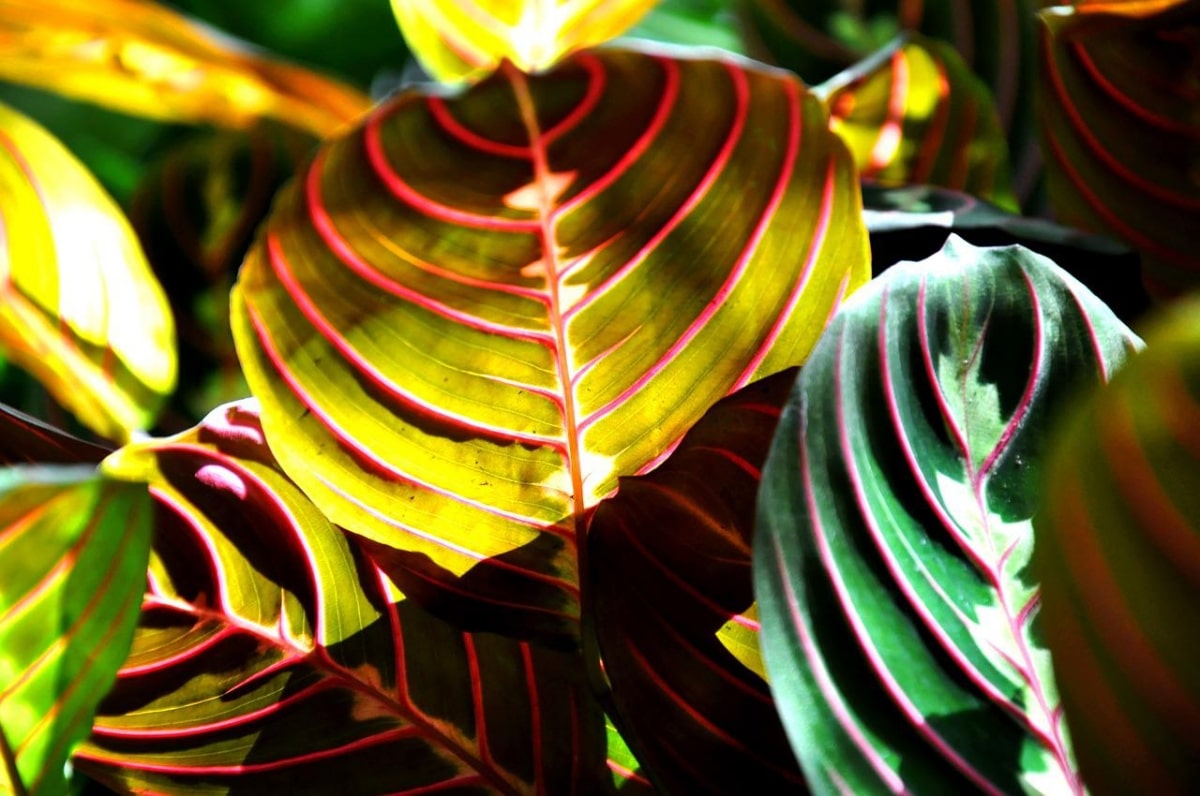
Did you know that there are several types of maranta? This is a type of herbaceous, tropical plant that has beautiful leaves of two or more colors depending on the variety, a characteristic that many of us love.
But if you want to expand your collection, you should know their names first. So let's start now so you can get the ones you like the most as soon as possible.
Selection of marantas
How many types of maranta are there? About 30 different species have been described, which grow only in tropical regions where it rains frequently.. This means that they are plants that need heat and a humid environment to grow, which is why they can be beautiful indoors as long as the humidity is high.
Now, it is very interesting to know the scientific names of the plants, because that way we can know more about each one of them. That's why, then we will tell you what are the best known maranta species:
maranta amabilis

Image – stekjesbrief.nl
La Maranta 'Amabilis' It is a variety of M. leuconeura native to South America that reaches a height of about 40 centimeters by approximately the same width. Its leaves are light green with dark green spots on its nerves on the upper side, and green on the underside.. It produces small bluish-white flowers that often go unnoticed.
maranta arundinacea
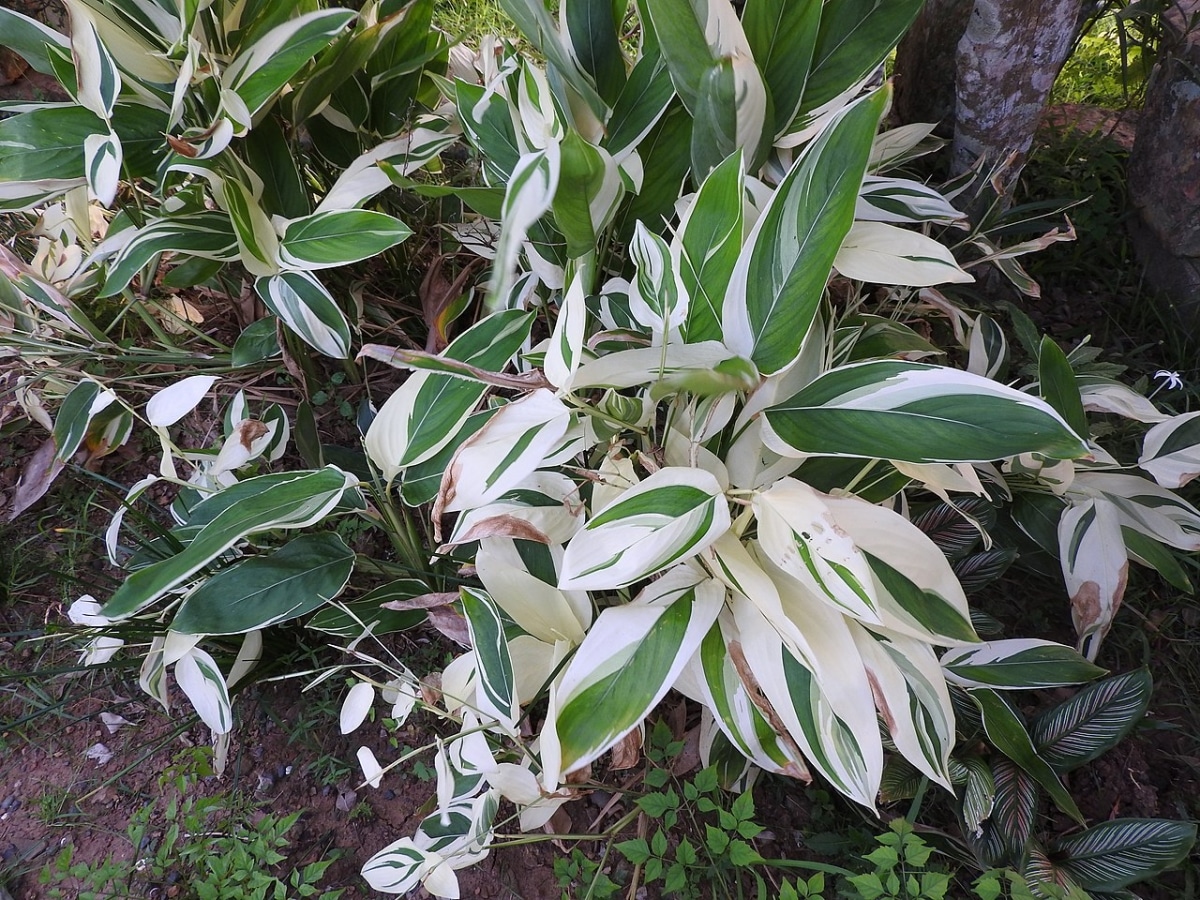
Image - Wikimedia / Yercaud-elango
La maranta arundinacea It is a species native to tropical America, specifically from Colombia and Venezuela. It is known by the names of sago, arrowroot and obedient plant, and grows up to a meter high by 60-70 centimeters wide. The leaves are of a good size, dark green, and also light green if it is the variegata form.. As a curiosity, you should know that the roots are edible, but they are extracted from mature plants, which are about 25-30 years old.
Maranta 'Fascinator'
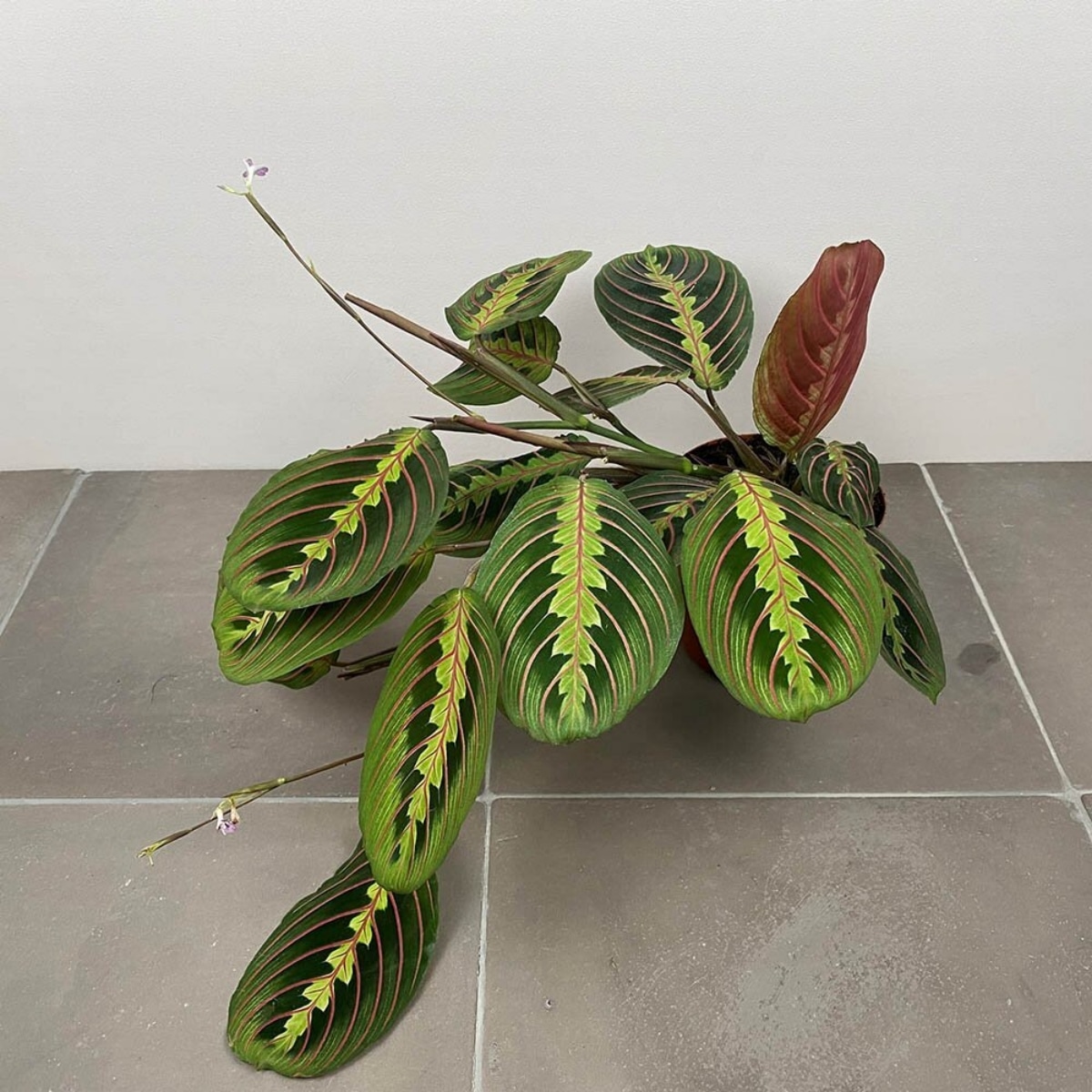
Image – bomagardencentre.co.uk
Its full scientific name is Maranta leuconeura 'Fascinator'. This means that it is a selected variety of M. leuconeura. Consequently, it is very similar to the type species, but It has a more intense and striking color.
Want a? Buy it here.
Maranta 'Kerchoveana'
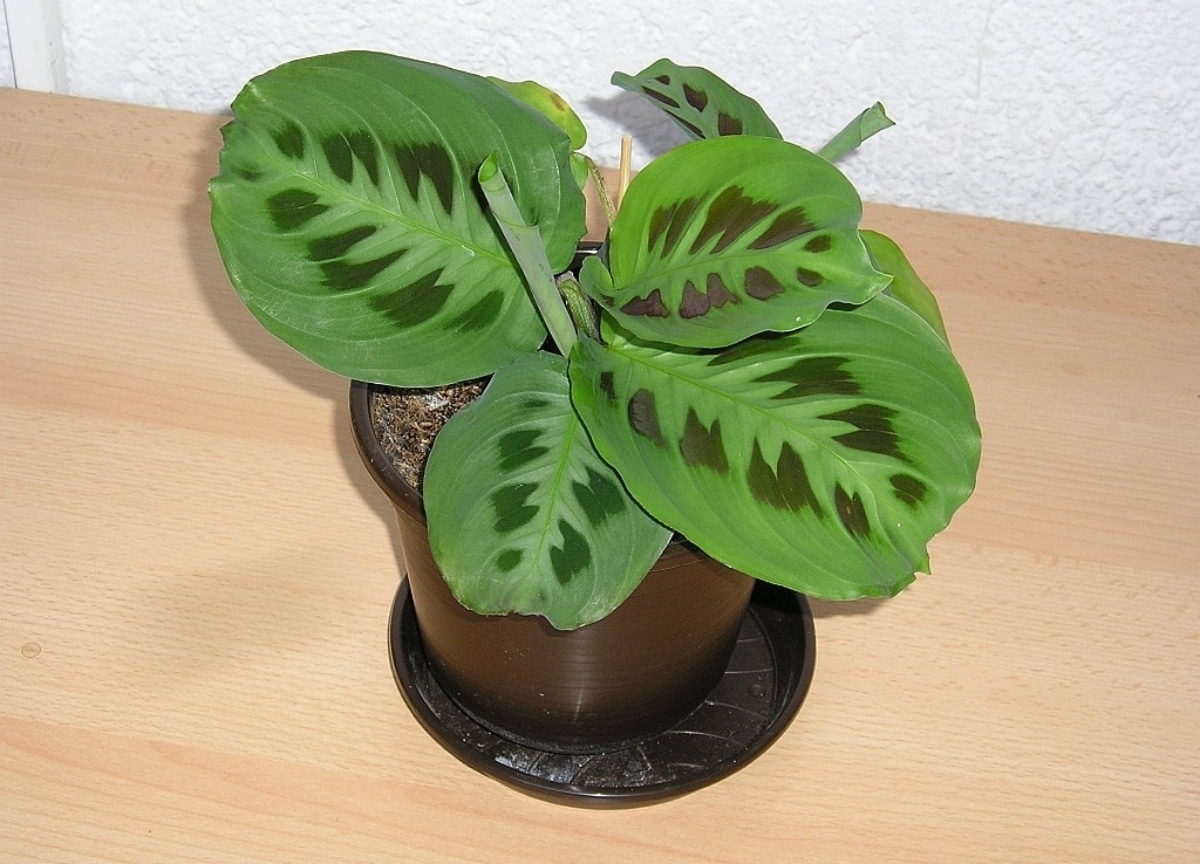
Image - Flickr / Maja Dumat
It is another cultivar of maranta leuconeura. It differs from this one by having green leaves with dark green spots with an almost rectangular shape.. It grows as a creeping plant, so it can be interesting to have it in a hanging pot. It reaches a height of approximately 40 centimeters.
maranta leuconeura
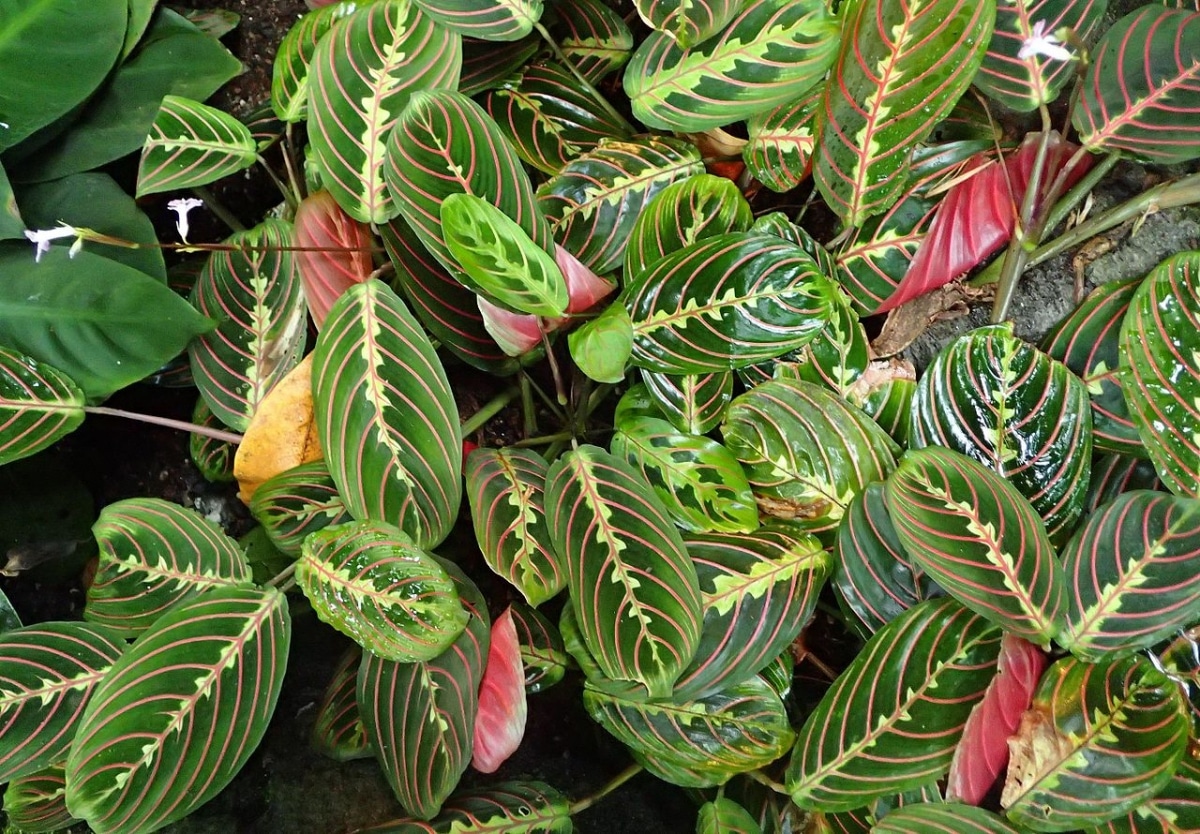
Image - Wikimedia / Krzysztof Ziarnek, Kenraiz
La maranta leuconeura is a variety native to Brazil known as maranta tricolor that reaches a height of 30 centimeters by about 30-35 centimeters wide. The color of its leaves is very variable, so much so that new subtypes have been described from it.
Maranta 'Lemon Lime'

Image – peaceloveandhappiness.club
La Maranta 'Lemon Lime' is another variety of M. leuconeura. Its leaves are green, but the nerves and the center of the leaf are yellowish-green., which is what gives it its name. It reaches an approximate height of 35-40 centimeters, and reaches 30 centimeters in width.
Maranta 'Light Veins'
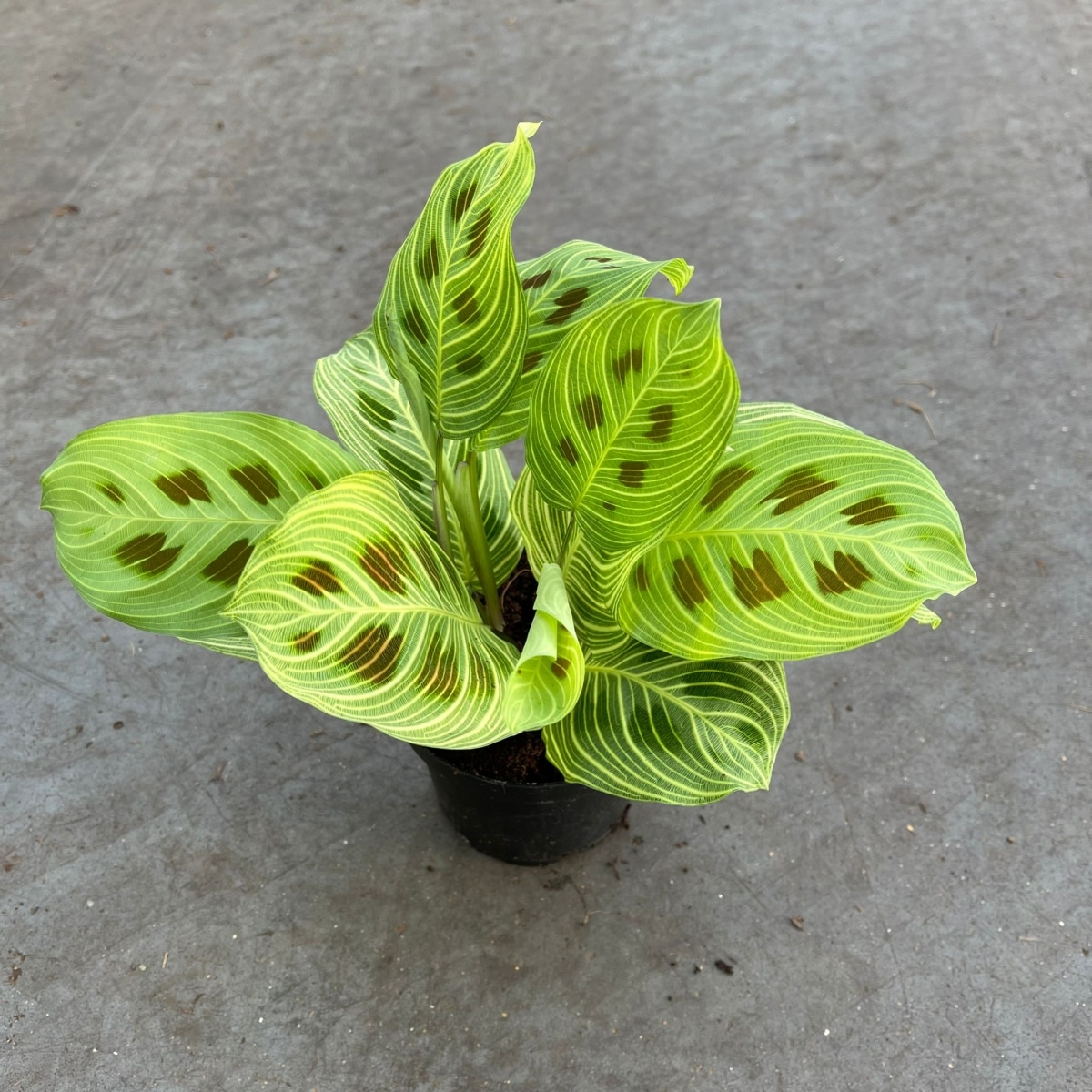
Image – imthenewgreen.nl
La Maranta 'Light Veins' is a cultivar of M. leuconeura characterized by having dark red spots and the rest of a light green color, as well as yellowish nerves. It reaches 30 or, at most, 40 centimeters in height by more or less the same width.
What are the care of maranta?
To finish, surely you want to know how to take care of the maranta, is not it? So that you have a beautiful plant, let's see what you have to do to make it healthy:
Luz
The most important thing is to put the maranta in a room where there is a lot of light. It is a plant that needs a lot of light to grow, but be careful, because it should not be placed right in front of the window since it should not receive direct sunlight, otherwise its leaves would suffer burns.
Likewise, it should not be kept near fans, radiators or a window that remains open for a long time. Air currents dry out its leaves, causing them to turn yellow.
Relative humidity and irrigation
Relative humidity must be greater than 50%, which is what happens in homes that are on islands, near the sea or rivers or in areas where it rains very, very often. But if that is not your case, you will have to spray the leaves of your maranta with rainwater or a suitable for consumption every day so that it does not dehydrate.
Regarding irrigation, it has to be watered every 4 or 5 days in summer. The rest of the year you have to give the soil more time to dry out. We will use rainwater or one that has little lime content; that is, one whose pH is 6 or less, but should never be less than 4.
Pot and substrate
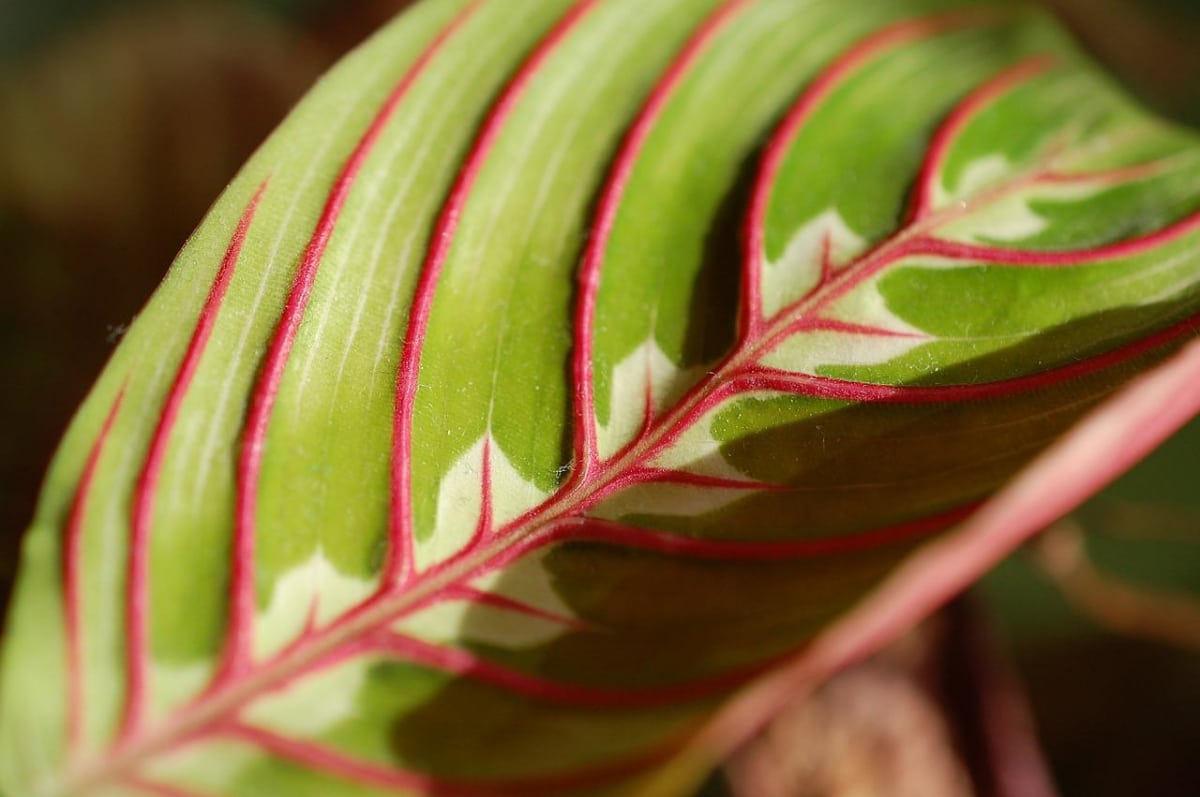
The pot can be made of plastic or clay, but what it has to have yes or yes so that the maranta lasts us a long time it is some other hole in its base for the water to flow through them. It is a mistake, and also a very serious one, to have it in a pot without holes, since it is not a plant that tolerates excess water in its roots. For this reason, it is also highly recommended to plant it in a spongy, quality substrate, such as the universal one from brands such as Flower o Westland.
In addition, you have to plant it in a larger pot -it should measure about 7 centimeters more, at least- every 2 or 3 years, or whenever we see that the roots come out of the holes, or if when trying to remove it from the container, the earthen bread does not fall apart.
We hope you liked it.